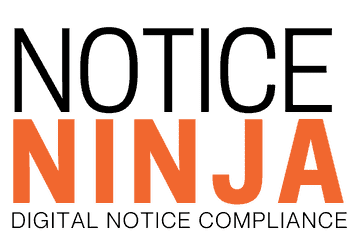Yes, NOTICENINJA is corporate tax notice compliance software that automates key workflows including notice assignments. The platform employs a rule-based system that can manage multiple level rules and ensure notices are directed to the appropriate stakeholder. As a result, you’ll never have to worry about notices being misdirected or slipping between the cracks.

How PE Firms Can Track Third-Party Tax Compliance Vendor Performance
26 August
Each year, private equity (PE) firms receive thousands and thousands of tax notices, many of which are related to carried interest, unclaimed property, asset valuation, and transaction pricing. The complex structure of PE firms—and their frequent M&A activity—make them a prime target for increased scrutiny from the IRS and state agencies. Most firms struggle to keep up with the steady stream of notices delivered to their mailrooms every day.
To handle the high volume of notices, many PE firms turn to third-party vendors. Depending on its size, a firm may outsource some or all of its tax notice management to a third-party partner. A larger firm with more complex needs may even engage multiple vendors. These vendors, which range from small outfits to the “Big Four” accounting firms, can operate like an extension of the firm and allow analysts and associates to focus on higher-value work.
Those benefits come with tradeoffs. There is often limited visibility into how third-party providers operate, which can make it challenging for firms to gain insight into the location and status of notices. That lack of visibility increases the risk of non-compliance and can eventually lead to fines and fees—which can ultimately put a strain on firms.
Despite these challenges, third-party tax compliance vendors are a value-add: they help firms maintain tax compliance without sacrificing their own resources. But, for firms to get the most out of their vendors—and have confidence that their notices are being resolved in a timely manner—visibility systems must be in place.
Here's a look at the challenges PE firms face when it comes to managing third-party tax compliance partners, and how corporate tax notice compliance automation software can help them reliably track the performance of vendors.
Common Third-Party Performance Issues
Split Focus
Oftentimes, vendors aren’t just responsible for managing tax notices—they also handle a firm’s tax payments and file its annual tax return. In these situations, it isn’t uncommon for tax notices to become a secondary focus or even fall by the wayside. To combat this issue, some vendors route notices to subcontractors or offshore teams that experience frequent turnover. As a result, it isn’t uncommon for notices to fall between the cracks. If the PE firm becomes aware of the issue, it can be challenging for analysts to pin down the responsible party and remedy the error.
Cost Overruns
PE firms spend tens of thousands to millions of dollars for third-party providers to handle routine tax notices. When notice resolution is further outsourced to subcontractors, additional fees are usually tacked on. Because of this, firms have become accustomed to receiving bloated bills that can be hard to decipher. Finance teams are often frustrated by the high spend—especially if their team must dedicate time and resources to managing vendors.
Security Concerns
Firms generally have limited insight into who, exactly, is handling their sensitive data and tax information. The lack of visibility and accountability—combined with impenetrable layers of outsourcing—creates security risks.
Tracking Challenges
It can be challenging for PE firms to address the challenges outlined above head-on. Many vendors lack a centralized platform that gives firms instant insight into the status of notices. Further complicating matters, notices change hands frequently, so it can be hard for firms to track where a notice is or who is responsible for it.
As a result, many firms don’t just struggle to determine whether notices are resolved—they also have difficulty monitoring and assessing the performance of their vendors. These challenges are compounded when firms work with multiple vendors with different reporting practices.
How NOTICENINJA Enables Third-Party Performance Tracking
Third-party tax compliance vendors are a valuable extension of PE firms’ teams, but only if their work can be tracked. NOTICENINJA automates the entire tax notice management lifecycle and gives firms instant insight into the status of notices, regardless of who manages them.
Here’s how NOTICENINJA can be used to streamline vendor management:
- Centralized Dashboard: NOTICENINJA’s dashboard gives users real-time visibility into all notices and allows users to share critical information and updates with relevant stakeholders
- Audit Trail: The platform allows users to see exactly who accessed notices and when, and documents all third-party actions
- Automation: NOTICENINJA uses OCR, machine learning, and AI-enabled workflows to automatically identify and categorize tax notices and prioritize urgent issues
- Workflow Management: NOTICENINJA assigns tasks, tracks deadlines, and provides a comprehensive picture of outstanding notices, so nothing slips between the cracks
- Access Control: Users can control who has access to which notices, so sensitive and proprietary information is protected
- Quality Metrics: NOTICENINJA’s AI recognizes errors and identifies trends and potential areas of improvement, and allows users to track the resolution success rate by provider
Start Monitoring the Performance of Your Vendors Today
NOTICENINJA empowers PE firms to resolve notices quickly—and manage vendors with ease. Firms that use the platform have greater insight into how their vendors operate and are given the tools and data needed to evaluate what is—and isn’t—working. As a result, firms are empowered to work only with those who provide the greatest value.
If your PE firm is ready to gain control of its tax notices and third-party vendors, contact us to learn more or take a tour of the platform.
RELATED POSTS
- How Tax Teams Are Capturing More Value From Amended Returns
- Authorization Explained: A Comprehensive Overview
- Why IRS Prefund Notices Matter to Tax and Payroll Operations
